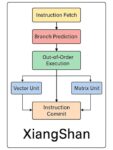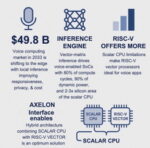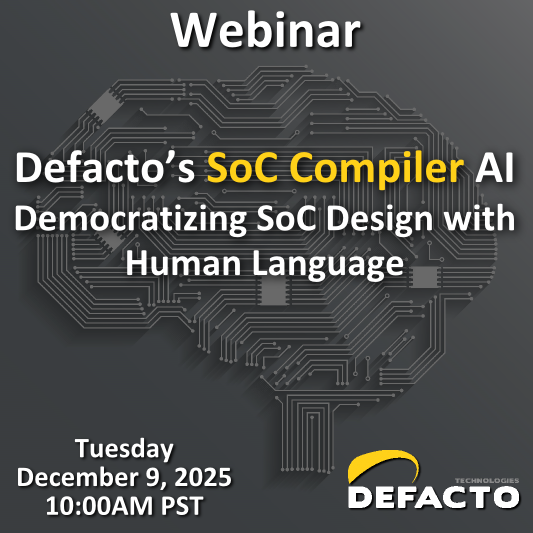The PC industry is entering its most significant transformation since the debut of the IBM PC in 1981. That original beige box ushered in a new era of productivity, reshaping how corporations and individuals worked, communicated, and created. More than four decades later, the AI PC is emerging as a new category — one that promises… Read More
Author: Jonah McLeod
The AI PC: A New Category Poised to Reignite the PC Market
GlobalFoundries, MIPS, and the Chiplet Race for AI Datacenters
GlobalFoundries’ (GF) acquisition of MIPS in 2025 wasn’t a nostalgic move to revive a legacy CPU brand. It was a calculated step into one of the most lucrative frontiers in semiconductors: AI, high-performance computing (HPC), and datacenters. As Nvidia, AMD, Intel, and hyperscalers embrace chiplet architectures, GF is betting… Read More
Yuning Liang’s Painstaking Push to Make the RISC-V PC a Reality
At Embedded World 2025 in Nuremberg, Germany, on March 11, 2025, Yuning Liang, DeepComputing Founder and CEO walked onto the stage with a mischievous smile and a challenge. “What’s the hardest product to make?” he asked rhetorically. “A laptop. It’s bloody hard… but we did it. You can swap the motherboard, you can upgrade, you can’t… Read More
Rapidus, IBM, and the Billion-Dollar Silicon Sovereignty Bet
Can cash and IBM collaboration put Japan into premier-league chipmaking? Rapidus is betting billions it can.
When Japan announced the creation of Rapidus in 2022, the news was met with a mix of enthusiasm and skepticism. The company would enter the market at a time of escalating demand for semiconductor fabrication capacity to… Read More
Basilisk at Hot Chips 2025 Presented Ominous Challenge to IP/EDA Status Quo
At Hot Chips 2025, Philippe Sauter of ETH Zürich presented Basilisk, a project that may redefine what’s possible with open-source hardware. Basilisk is a 34 mm² RISC-V SoC fabricated at IHP Microelectronics on its open-source 130nm BiCMOS process in Germany. Basilisk, named after the Greco-Roman mythical creature known… Read More
Can RISC-V Help Recast the DPU Race?
ARM’s Quiet Coup in DPUs
The datacenter is usually framed as a contest between CPUs (x86, ARM, RISC-V) and GPUs (NVIDIA, AMD, custom ASICs). But beneath those high-profile battles, another silent revolution has played out: ARM quietly displaced Intel and AMD in the Data Processing Unit (DPU) market.
DPUs — also called SmartNICs… Read More
What XiangShan Got Right—And What It Didn’t Dare Try
An Open ISA, a Closed Mindset — Predictive Execution Charts a New Path
The RISC-V revolution was never just about open instruction sets. It was a rare opportunity to break free from the legacy assumptions embedded in every generation of CPU design. For decades, architectural decisions have been constrained by proprietary patents,… Read More
Flynn Was Right: How a 2003 Warning Foretold Today’s Architectural Pivot
In 2003, legendary computer architect Michael J. Flynn issued a warning that most of the industry wasn’t ready to hear. The relentless march toward more complex CPUs—with speculative execution, deep pipelines, and bloated instruction handling—was becoming unsustainable. In a paper titled “Computer Architecture … Read More
Voice as a Feature: A Silent Revolution in AI-Enabled SoCs
When Apple introduced Siri in 2011, it was the first serious attempt to make voice interaction a mainstream user interface. Embedded into the iPhone 4S, Siri brought voice into consumers’ lives not as a standalone product, but as a built-in feature—a hands-free way to interact with an existing device. Siri set the expectation… Read More
Feeding the Beast: The Real Cost of Speculative Execution in AI Data Centers
For decades, speculative execution was a brilliant solution to a fundamental bottleneck: CPUs were fast, but memory access was slow. Rather than wait idly, processors guessed the next instruction or data fetch and executed it ‘just in case.’ Speculative execution traces its lineage back to Robert Tomasulo’s work… Read More



















Jensen Huang Drops Donald Trump Truth Bomb on Joe Rogan Podcast